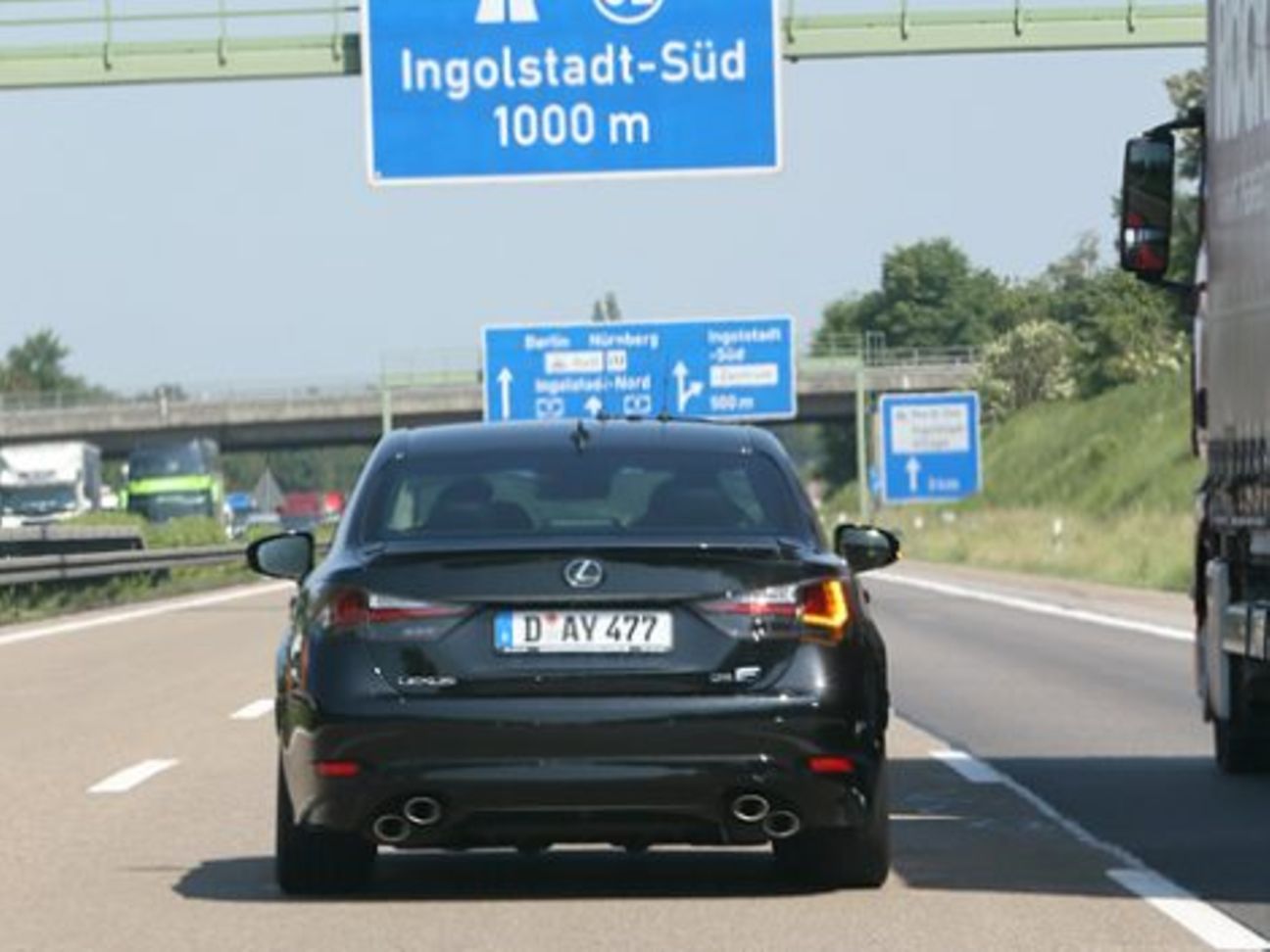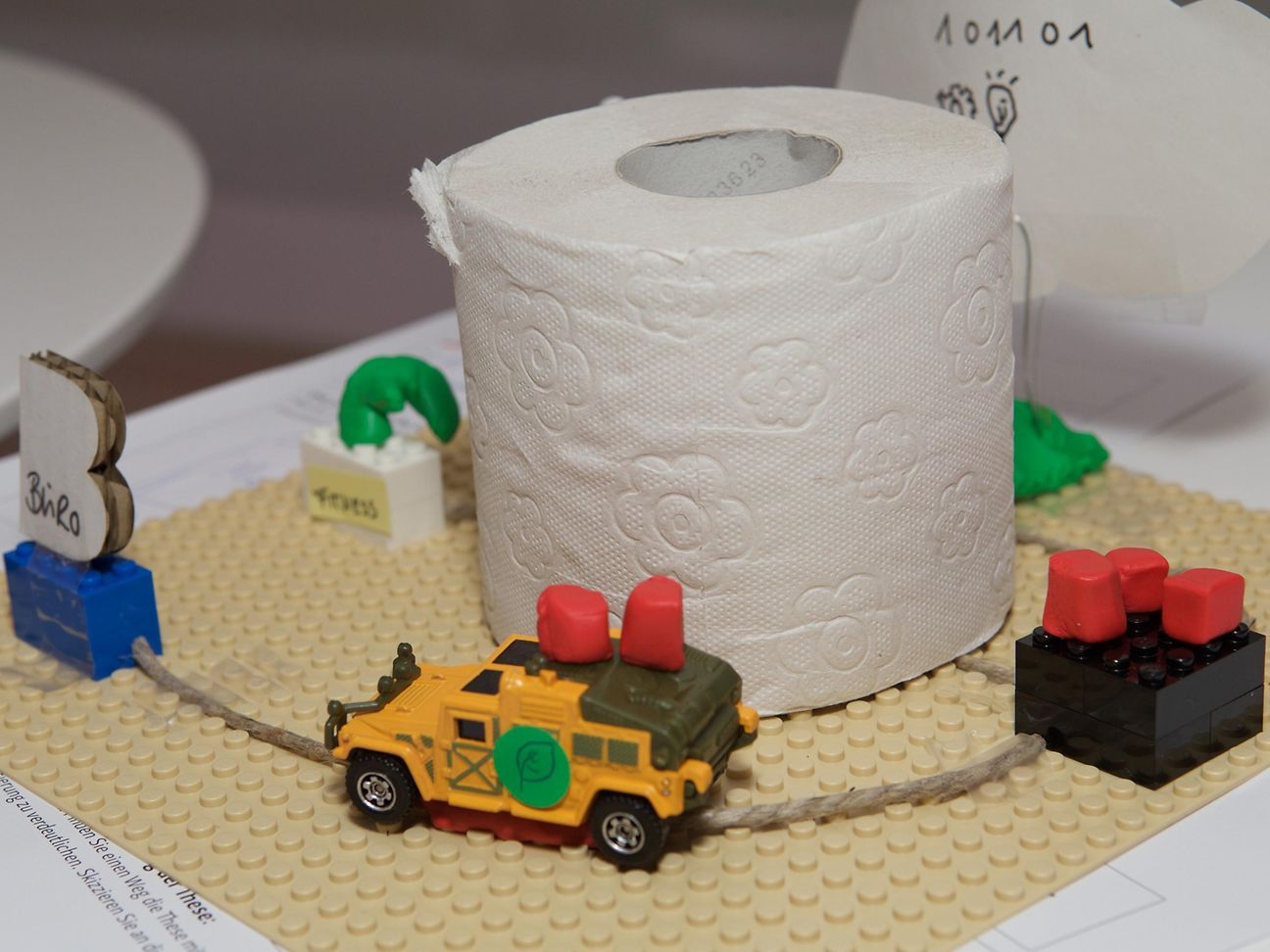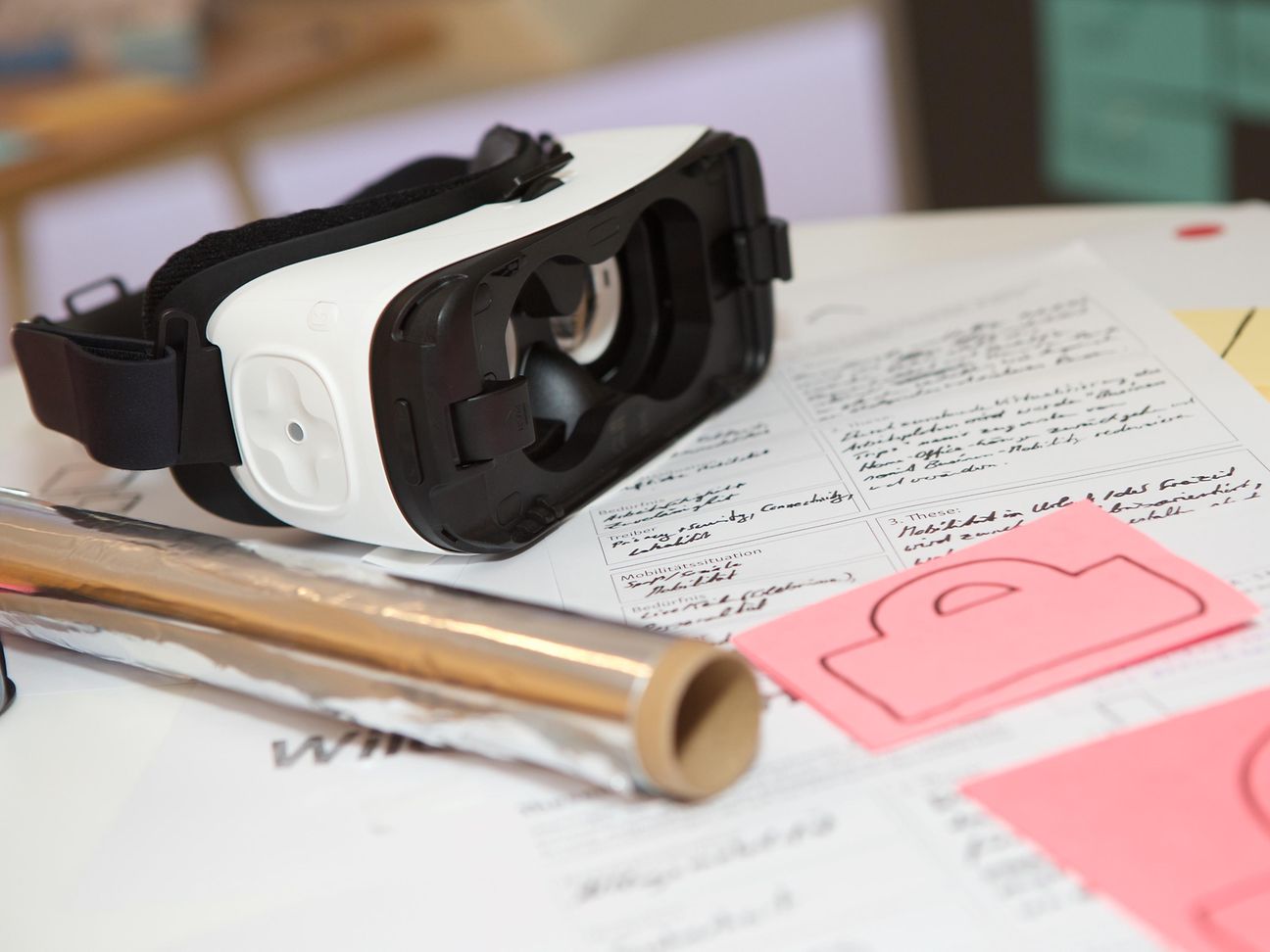

Take a quick trip into the future
For many, the end of the year is an occasion to take a look back. So how would you feel about using the time for a forecast? A forecast, to be precise, on the topic of mobility in the year 2026. How will we be getting about in ten years' time? About 40 specialists from the scientific and industrial communities knocked their heads together on the topic at Deutsche Telekom, giving their imagination free rein.
Down on the street there's nobody but pedestrians. Anyone in a hurry or just with somewhere to go is seen over the rooftops in their personal single-seat helicopters. I'll never forget either that roughly but colorfully scrawled image, nor where and when it was created. In fact, a classmate of mine put it down on paper in 1976. "What do you think the world will be like in the year 2000?" was the task the teacher had written on the blackboard.
Now, 40 years later, it's clear that not much of that vision has come to pass. We're still stuck in lines of throbbing metal, though these days there aren't so many flowers and stickers on the queuing cars. And they look sleeker and have more knobs and lights on their dashboards. But the pace of the future is now clearly set once more on cars: cars that park themselves or that attempt to make their own way through the traffic without our intervention. And also on what car makers are driving forward through their concentration on developments in digitization.
But we're not looking at mobility as a daily reality in the present, but exploring the prospects for mobility of the future. How is it going to look? To provide us with a picture, a gathering of specialists have put their heads together on the topic at Deutsche Telekom. The team has come together from DAX-30 corporations and from start-ups, from a public transport business, an insurance company, a university of applied science, and from Deutsche Telekom itself. They combined the wisdom and experience of people in transport and logistics as well as from the network technology and connected car sectors. Over the course of an entire day they united their brain power in an effort to imagine mobility in the year 2026 – in ten years' time. Their ideas will soon be put on display in the Telekom Design Gallery, when the mobility topics on show there in Deutsche Telekom's futurist exhibition are redesigned.
I was lucky enough to be at the discussion – it was stunning. The participating specialists, following what is referred to as the "design thinking method," tried out and adjusted their ideas, ultimately fashioning them into prototypes made of cardboard, paper and other materials.
Aside from a good dozen new ideas, by evening time they had also managed, among other things, to sketch out the tendencies they had identified for my own digital future.
- Mobility will be provided at a flat rate. There'll be a basic provision along with a number of options that I'll be able to book additionally – depending on how extensive my mobility needs are. And environmental and social questions are built into the concept.
- Data as the very crux of mobility: Where I am and what I'm planning to do is transmitted and processed up the line – resulting in the best possible mobility offering for me. And of course this way of doing things also takes environmental and social concerns into account.
- I just won't be moving about as much as before. Thanks to virtual reality I can flit off to a holiday resort with my friends or browse through a museum without having to go out my front door. And at work too I'll collaborate with my colleagues in exactly the same way – from anywhere in the world or without leaving home. In my day-to-day work I can count on the support of 3D printing technology – much of what I need I can simply get my printer to create for me. Wherever I happen to be.
Many of the ideas are based on a transport system in which vehicles are capable of driving autonomously. And in which the choices are available to match your preferences precisely. Anyone who wants to go to work by bike can simply book one to arrive at their front door. If it starts raining in the afternoon, they can still always drive home. If the weather forecast tells them they're going to have a sunny evening, they can take the convertible with the hood down to the biergarten. People can book all these options from all over the world along with flights and train tickets via a highly secure data network that belongs to no one.
Yet another idea that impressed me concerned the delivery of such daily necessities as toilet paper, for example. Everyone needs it. So why not deliver it to everyone on a universal basis, continuously and automatically? At night, for example, when routes are free of traffic? In an efficient, bundled service.
A bit more distant, but to me no less creative, are visions of new modes of transport, such as drones that can be printed out at a particular location and can then be recycled straight after getting me safely to where I want to go. It would of course be possible to design such vehicles highly customized to the individual using them. And no deadhead trips to some depot or parking area would be needed. This use of routes by air has something familiar about it, doesn't it? – oh yes, from that school picture painted back in 1976 ...
But what is your vision for mobility in 2026?

LTE could make road traffic safer
We might not drive cars any more in the future; instead, they'll drive us. Self-driving cars are currently a hot topic, widely discussed in the media and at trade fairs. The accompanying pictures usually show the vehicle occupants relaxing, perusing their smartphones or tablet PCs while the car drives. They are probably using the LTE mobile communications technology, which already ensures fast data transfers today and will likely be the method of choice in future, as well. Only for the car passengers? No, probably for the cars, too – for safety's sake.


